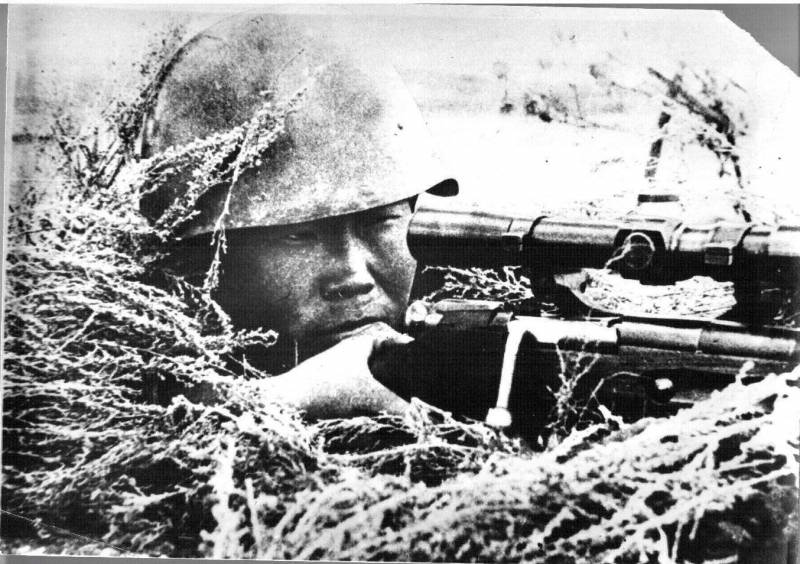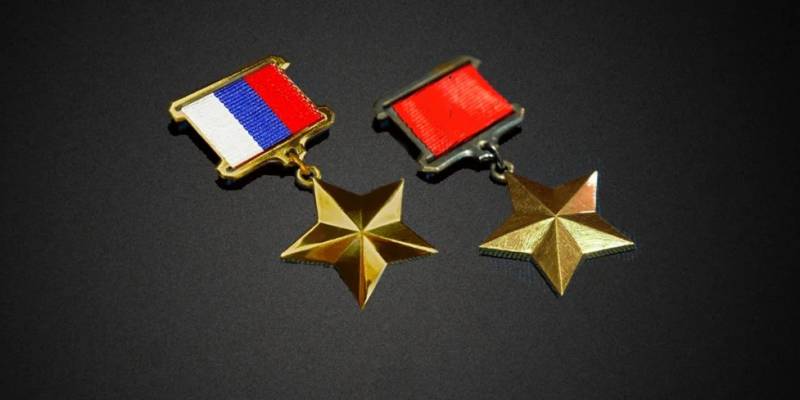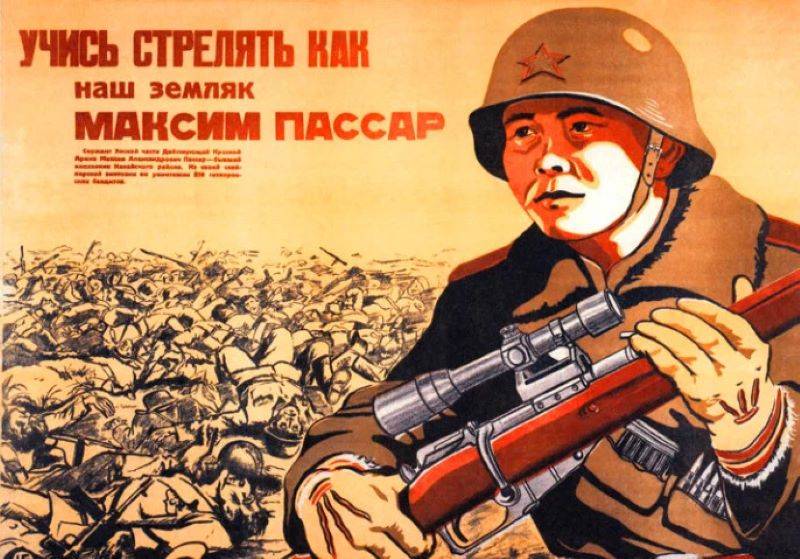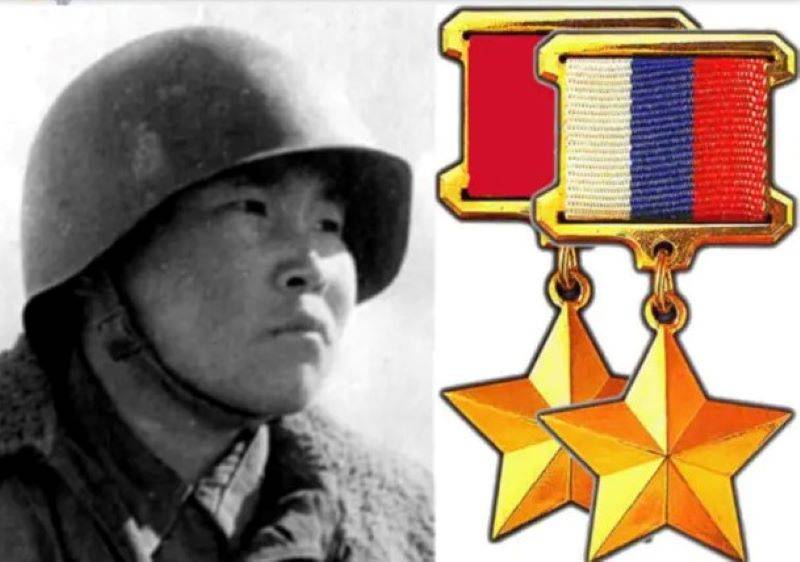The Stalingrad feat of the Nanai sniper Maxim Passar

Can you not be a Nanai?
Among the heroes of the Great Patriotic War, it is now impossible not to mention Maxim Passar. A born shooter from the dynasty of Nanai hunters, he destroyed 237 enemy soldiers and officers as a sniper during the Battle of Stalingrad, he himself died at the age of 19.
But Passar never received the title of Hero of the USSR posthumously. He received the title of Hero of Russia already in modern times. With what it could be connected?

The surname Passar comes from the Nanai word "paosodi" - in translation "to shoot accurately." This reflects the specifics of the activities of the hero's ancestors. All the men in their family were fur hunters, like the American mountainmen.
What do we know about the Nanais? Because of the work of the Nanai singer Kol Beldy, who for some reason sang about the tundra, the poorly educated masses of the population had the erroneous opinion that they were northern people. In fact, their homeland is the Khabarovsk Territory, where there is no smell of tundra.
In the homeland of Maxim Passar, in the tract of Lower Qatar, there are dense monsoon forests. The forest has fed the hunting dynasty of the Passars all its life. Most likely, the family came from the Red Wolves clan, which consisted of hereditary hunters and fishermen.
There is evidence that during the Great Patriotic War, its representatives were also snipers in the Far East during the hostilities against Japan, and in Belarus during Operation Bagration.
Passar's cousins, Andrey (later a national Nanai poet) and Alexander, also became famous as legendary snipers, but did not receive such fame. Alexander also served in intelligence, in addition to shooting, he was excellent at hand-to-hand combat, including knife fighting, and received the title of Hero of the Soviet Union.
Hunter and volunteer
From childhood, the boy learned to own a hunting firearm. weapons. Usually small-caliber rifles are used for fur trade, in common parlance - small things, for a person who owns such weapons, it is enough just to learn how to use sniper rifles.
With an excellent optical sight and with an obligatory silencer, even if he reduced the lethal distance. One way or another, in 1942, an 18-year-old boy, having covered a distance of 60 km on foot, came to the recruiting station closest to the tract to sign up as a volunteer.
At that time, there was an unspoken rule in the Far East not to take representatives of small indigenous peoples to the front. Firstly, their demographics were, to put it mildly, weak, and secondly, their educational level left much to be desired. In addition, at the very beginning of the war, the elder brother of Maxim Passar died.
But this became one of the motives for the future hero of the Battle of Stalingrad to go to war. In the event of the death of one of the brothers, it was almost impossible to call another, if it was a question of small nations. And at first they wanted to send 18-year-old Maxim back to his native tract.
But there were smart people in the military registration and enlistment office who decided to check his level of possession of firearms, gave him small things in his hands, took him to the yard, and hung targets. The results of such “testing” turned out to be so brilliant that the guy was immediately signed up as a volunteer.
True, at first he was mortarmen, but already in training, the command, realizing that the young man was not in his place, sent him to a sniper school. From there, a professional of the highest class came out in possession of the Mosin rifle, she is also a “three-ruler”.
I sit well, I look far away
Talented and fluent in Russian (the diaries were written in almost perfect Russian, at that time the Nanais were already sufficiently Russified), the private was almost immediately sent to the combat zone. There he mastered almost independently a more advanced sniper weapon.
Very soon, Passard was appointed to the position of instructor in the training of snipers, which was an unprecedented fact. The private had to train sometimes even junior officers. Passar quickly rose to the rank of senior sergeant and the position of commander of the sniper squad.
Let us also note this unprecedented case - that the sergeants were appointed to the positions of commanders. According to approximate statistics, in total, snipers trained under the guidance of Passar eliminated about three thousand enemy fighters.
These data are quite controversial, it is only documented that the soldiers of the 117th Infantry Regiment, where Passar served, who underwent his training, liquidated 775 fascists.
And at the forefront, a very curious fact came to light.
The fact is that the Red Wolves have a genetic tendency to see in the dark. At a minimum, hunting at dusk, and sometimes even at night, this ability allows.
In fact, it is extremely rare to see a Nanai or Udege wearing glasses even in old age. Alexander Passard also became famous because of this feature of vision in his nightly sorties to take tongues. In addition, Amur hunters have been excellent at climbing trees since childhood, and Passar was no exception. And he skillfully chose firing points in the most unexpected places for the enemy.
Although not a fact, but a legend
It is impossible, if only for the sake of justice, not to mention one legend, which has not yet been confirmed. Allegedly, near Stalingrad, where Passar was sent, sniper rifles “in the latest fashion” were sorely lacking. If not to say that it was not at all.
You can find references to the fact that a talented sniper initially used "grandfather's methods", in his hands he had a Mosin magazine rifle, which was adopted back in tsarist times, in 1891.
Despite the fact that for the "mosinka" already at that time there was an optical sight developed in 1931, one can find information that during the Battle of Stalingrad they were also not enough, and Passar used binoculars to more accurately identify targets, and then aimed "mosinka" unmistakably according to the picture obtained from binoculars.
However, in all the photographs of Passar it is clear that an optical sight is fixed on his three-line, and in those that were already taken in the midst of the Battle of Stalingrad, he was photographed with a sniper rifle. On campaign posters distributed in the Far East, "Learn to shoot like our countryman Maxim Passar," he is holding a Mosin rifle with a telescopic sight, modified for sniper shooting.

There is evidence that when the command replaced his “mosinka” with an automatic “sniper rifle” (presumably ABC-36), he tripled the number of liquidated Nazis in a month. The German command appointed a reward of 117 thousand Reichsmarks for the head of the best sniper of the 100th Infantry Regiment. The enemy was especially alarmed by the almost round-the-clock "hunt" of the sniper, who saw in the dark, which did not give the Nazis a break.
Passar was helped by his hunting past, but it also caused his death at the age of 19. The fact is that, having tracked down a fur-bearing animal, the hunter remains in one position so as not to frighten him away, but if there is a whole brood, then, accordingly, the position also does not change.
Passar did just that in the war, he could liquidate several opponents in a row from the same position. The “first wake-up call” for him sounded back in December 1942, when a young sniper received a shell shock, but remained in the ranks.
In January 1943, Passar suppressed two enemy machine-gun emplacements, which did not give the soldiers of the Red Army a chance to advance. Despite the fact that the sniper's position was well camouflaged, the Germans quickly figured it out.
Passar did not replace her, and it is believed that he managed to remove two German snipers from the same position. Without an order, count without permission, although he was protected and even transferred to the reserve. But, spitting on the commands, he moved to the front line, and too close to the enemy: 100 meters.
Hero or not Hero?
Perhaps, for Passar's self-will, he was not awarded the title of Hero. Even posthumously, only the Order of the Red Star, already the second in a row. When Passar was buried, the command ordered to write "Hero of the Soviet Union" on the tombstone.
Apparently, they believed that the title would still come to him. But there was no official order.
It is quite possible that this was due not only to the unauthorized act of Passard. Taking into account the Soviet ideology of friendship between peoples, Moscow would not have missed the opportunity to promote the first Hero of the USSR of Nanai nationality. Most likely, chaos with documents worked during the bloody battle for Stalingrad.
And the first hero among the Nanais was Maxim's cousin, Alexander Passar, but only in 1944. But even earlier - in 1943, the commander of the 65th Army, General Pavel Batov, presented Maxim Alexandrovich Passar to the title of Hero of the Soviet Union posthumously.
At the military council of the Voronezh Front, they once again confirmed that Passar had rightly received the Order of the Red Banner. In 1968, Batov raised the question again, but the answer was the same. In 1994, the administration of the Nanai district of the Khabarovsk region again raised the issue, but the answer did not come at all.
Probably not before that - the first Chechen war began. Only in 2003 did another letter come from the Nanai region to the Ministry of Defense. Still, they considered it, but answered with a lengthy and not very justified refusal.
Everything would have continued like this if the journalist of the "Young Far East" Irina Polnikova. She somehow miraculously made her way to a meeting with President Vladimir Putin and put the question squarely. Putin immediately said that he could not give the title of Hero of the Soviet Union, because such a country no longer exists.

But the title of Hero of the Russian Federation was awarded to Passar literally in a matter of days. Popular rumor in the Khabarovsk Territory, however, despite all the refusals from the Ministry of Defense, considered Passar a Hero from the moment the inscription about this appeared on the monument at the Gorodishchenskoye cemetery.
The fact that Senior Sergeant Passar is a Hero of the USSR was openly discussed even at political information in schools. Sometimes one or another political instructor in the Far Eastern military units could have mentioned him, although the question remains why Soviet officials so stubbornly refused to assign the Gold Star to Passar?
But the main thing in the current situation is not so much the regalia, which are known to be issued, but the people's memory. Until now, the most popular name among newborn boys in the Nanai district of the Khabarovsk Territory is Maxim. And this does not depend on nationality, Nanais in the region are only 20 percent.
Information